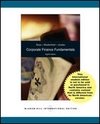
Argentine wine
Source: Wikipedia. Pages: 38. Chapters: Argentine winemakers, Wine regions of Argentina, Wineries of Argentina, San Juan Province, Argentina, Mendoza Province, Río Negro Province, Catamarca Province, Salta, Jujuy Province, La Rioja Province, Argentina, Bodega... Viac o knihe
Produkt je dočasne nedostupný
15.14 €
bežná cena: 17.20 €
O knihe
Source: Wikipedia. Pages: 38. Chapters: Argentine winemakers, Wine regions of Argentina, Wineries of Argentina, San Juan Province, Argentina, Mendoza Province, Río Negro Province, Catamarca Province, Salta, Jujuy Province, La Rioja Province, Argentina, Bodega Catena Zapata, Argentina Wine Route, Trapiche, Cafayate, Torrontés, Al Este, Mendoza wine, The Vines of Mendoza, San Martín, Mendoza, Buenos Aires wines, Domaine Al Este, Caucete Department, Médanos, Buenos Aires, Cuyo, Pablo Gimenez Riili, Santiago Achával, Tupungato Department, San Rafael Department, Maipú Department, Mendoza, San Martín Department, San Juan, Bodegas Norton, Uco Valley, Pedro Giménez. Excerpt: The Argentine wine industry is the fifth largest producer of wine in the world. Argentine wine, as with some aspects of Argentine cuisine, has its roots in Spain. During the Spanish colonization of the Americas, vine cuttings were brought to Santiago del Estero in 1557, and the cultivation of the grape and wine production stretched first to neighboring regions, and then to other parts of the country. Historically, Argentine winemakers were traditionally more interested in quantity than quality with the country consuming 90% of the wine it produces (12 gallons/45 liters a year per capita according to 2006 figures). Until the early 1990s, Argentina produced more wine than any other country outside Europe, though the majority of it was considered unexportable. However, the desire to increase exports fueled significant advances in quality. Argentine wines started being exported during the 1990s, and are currently growing in popularity, making it now the largest wine exporter in South America. The devaluation of the Argentine peso in 2002 further fueled the industry as production costs decreased and tourism significantly increased, giving way to a whole new concept of wine tourism in Argentina. The past years have seen the birth of numerous tourist-friendly wineries with free tours and tastings. The Mendoza Province is now one of Argentina's top tourist destinations and the one whose economy has grown the most in the past years. The most important wine regions of the country are located in the provinces of Mendoza, San Juan and La Rioja. Salta, Catamarca, Río Negro and more recently Southern Buenos Aires are also wine producing regions. The Mendoza province produces more than 60% of the Argentine wine and is the source of an even higher percentage of the total exports. Due to the high altitude and low humidity of the main wine producing regions, Argentine vineyards rarely face the problems of insects, fungi, molds and other grape diseases that affect vineyards in other c
- Vydavateľstvo: Books LLC, Reference Series
- Formát: Paperback
- Jazyk:
- ISBN: 9781156066300



 Anglický jazyk
Anglický jazyk 







